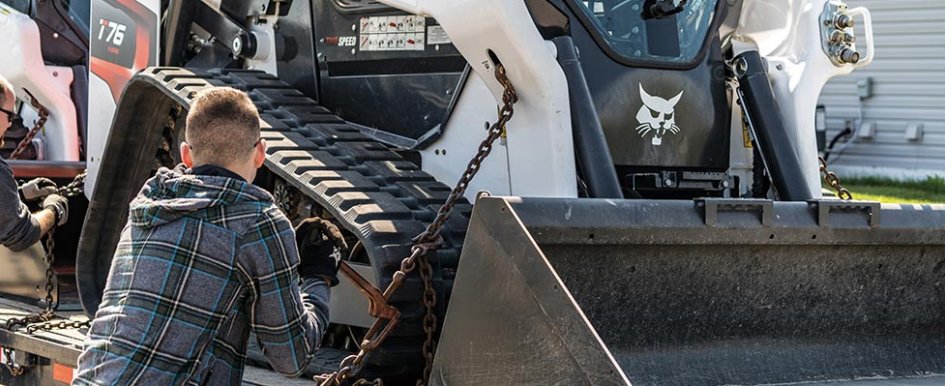
Transporting a compact track loader or skid-steer loader requires careful planning. Following recommended steps for selecting the right transport vehicle, loading the machine and securing it properly will help operators move their equipment confidently from jobsite to jobsite.
Let’s review key questions from operators who are looking for more insight before transporting their equipment.
What should I consider when selecting the right transport vehicle?
Before transporting your loader, ensure the transport vehicle has adequate size and capacity for both the machine and any attachments. While standard trailers are suitable for most loaders, larger loads may require a trailer with a higher weight rating. You can typically find the trailer and vehicle’s load ratings on an identification plate — often located inside the driver’s side door for vehicles, or near the hitch or on the tongue for trailers — or in the owner’s manual.
Always check federal, state and local regulations regarding gross vehicle weight, width, length and height, as special permits may be required for oversized loads.
I’ve selected my transport vehicle. How do I load my machine?
Clean your loader of mud, sand or debris before loading. Park the trailer on firm, level ground and secure its brakes. Use ramps rated for your machine’s weight, preferably metal ramps with slip-resistant surfaces. Disengage auto-idle and set two-speed travel to low-range. When loading, move the heaviest end of the machine up the ramp first — this is typically the rear, unless a front-mounted attachment shifts the balance. Support the trailer’s rear as needed to prevent lifting the front of the trailer during loading or unloading.
Do you have a checklist to help me ensure my loader is secure?
Before taking your loader down the road, it’s important to make sure it is secure on the trailer.
- Once positioned on the trailer, lower attachments to the trailer floor, stop the engine and engage the parking brake. For added security, lock all doors and covers before transport.
- Place chocks, cradles or wedges in front of and behind each wheel or track to prevent movement. This will assist in preventing rolling or shifting during transit.
- Use tie-downs at the front and rear, connected at the manufacturer-recommended points. Most manufacturers recommend using at least four connection points to prevent movement. Some trailers have built-in features like D-rings, chain slots or strap rails that make connecting the machine easier.
- Always inspect tie-downs and attachment points for wear or damage such as cracks, stretches or fatigued links before use.
- If an attachment is not connected to the machine, secure it separately to the trailer. For hydraulic attachments, route hoses so they do not interfere with tie-downs or machine movement.
Following these procedures and the instructions in your operation and maintenance manual gives you the basic information to efficiently transport your compact loader and attachments. Proper transport practices not only protect the machine but also improve overall productivity and peace of mind during moves.
